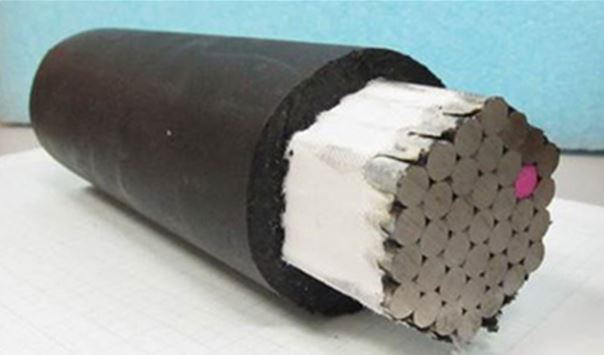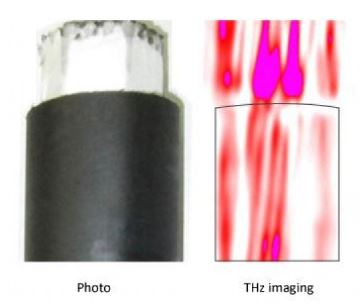 | | The Graduate School of Engineering Research team at Tohoku University in Japanese city of Sendai discovered an innovative, non-invasive way to evaluate the extent of steel wires deterioration. Steel cables are important structural elements often used to withstand and distribute tremendous loads, like those sustained in extradosed and suspension bridges. More often than not such steel cables are subjected to severe whether conditions that may cause damage to steel wires often hidden underneath protective cover. No wonder that such wire cables involve extremely rigorous safety requirements with regard to corrosion and therefore use durable insulation for weather protection. The terahertz imaging device developed by Tohoku Researches allows to see through the cable protective cover made of polyethylene resin, PVC and thereby conduct non-destructive inspection of steel wires inside without disturbing external cover. |
| | | A |
| The optical measurement system of the Japanese scientists represents a unique, brand new source of terahertz waves. According to the team leader Professor Yutaka Oyama, their device combines a terahertz emitter on the one hand, and laser on the other hand (translating other ranges of electromagnetic spectrum into THz ). THz radiation at frequency of 0.2 – 2 THz backed up with Fourier transformation allows quantitative evaluation of various types of rust appearing inside the cable wires. This way steel wire cables can be inspected for corrosion without peeling off the protective jackets. | AA |  |
| A | | Picture by Tohoku University team |
| Safety engineers and inspectors who now mostly use destructive ways of inspections involving removal of the outer coating from the cable should be the biggest admirers of this invention. Mechanical intrusion often implies the risk of water and other forms of moisture penetrating the wires and causing corrosion after the inspection has been completed. Moreover, this Terahertz imaging method is expected to replace rather other insecure and precarious inspection methods, for instance based on X-ray imaging.Terahertz radiation is a type of electromagnetic radiation with a frequency spectrum (0.3 – 10 THz) lying between infrared and super-high-frequency (microwave) ranges. Similar to Infrared and microwave waves, terahertz rays are capable of penetrating various non-conductive materials (e.g. paper, clothes, carton, wood, masonry, plastic and many others). | |  |
With that said, terahertz radiation is not ionizing, i.e. absolutely harmless for humans. However, up until recently the overwhelming majority of the terahertz spectrum has not been used because there were neither sources nor receivers of coherent radiation for this particular range. Actually, it is this why terahertz span of electromagnetic spectrum used to be called a ‘THz gap”.
Well, now - thanks to the efforts by Japanese and other researchers - it looks like slowly but surely this terahertz gap is being successfully bridged, while Terahertz imaging systems produced by Terasense play important role in this important mission.


